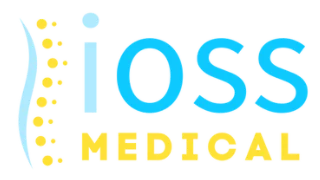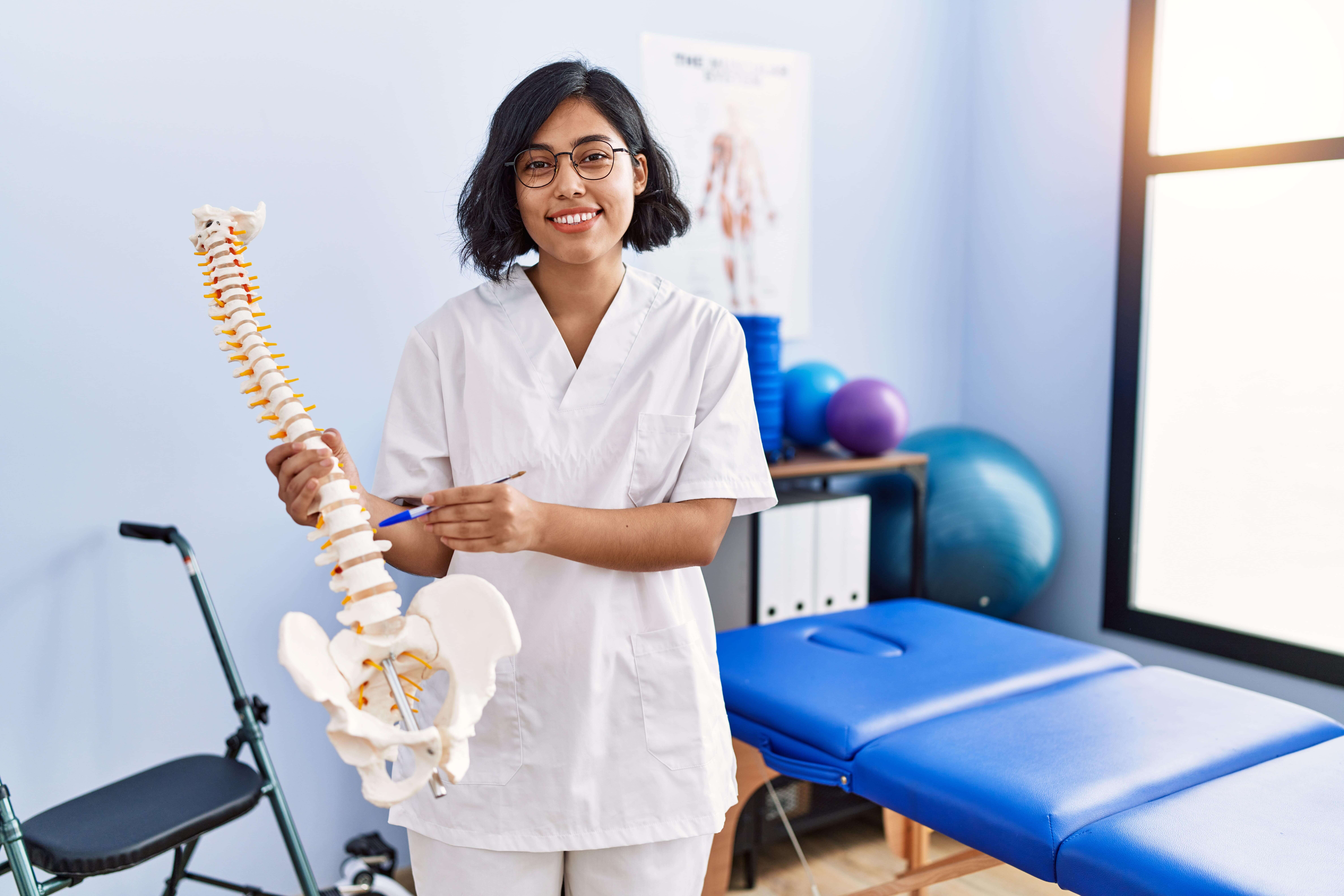Are you feeling pinched nerve pain associated with herniated discs? You no longer have to go on with it. If you live in the Clifton, NJ area and suffer from a herniated disc, our treatment center offers ground-breaking relief. This could be the change you need to make your life better.
Think of being completely mobile without the pain from the herniated disc, which is typical for this condition. Our professional team uses modern techniques and applies advanced technology to deliver your custom treatment and meet your precise needs. Give up your herniated disc discomfort and experience a vibrant life through better living.
Let not your herniated disc imprison you from following your dreams, goals, and passions. Your mobility and independence are something that you can once more have, as a consequence of following our efficient and effective treatments. The pain-killer you’ve been looking for is only one call away at (973)-798-1787, so make that call now.
Take the wheel for your herniated disc troubles and lead a happy life again. Schedule Your Appointment today, Call (973)-798-1787 and let us work together for your pain relief. Do not let an osteoclastic hernia kill the way you live; do something today!
Introduction
A herniated disc can be gravely debilitating, seriously interfering with someone’s daily life and leading to immense pain. But so does surgery is not always the only reason to look for treatment. Having an array of non-surgical interventions for herniated discs as treatment is an emblem of hope for the residents of Clifton, New Jersey that the Institute of Orthopedics, Spine, & Sports provides. In this guide we will examine diverse non-operative techniques that are used in Clifton, NJ for the reduction of herniated disc symptoms; we will also discuss efficient strategies for this target.
Understanding Herniated Discs
Identification of the disc herniation condition and know-how it affects is the first step to treating it using good management. The spine is comprised of vertebrae that are cushioned with discs like those in between the bones themselves. A hernia of a disc signifies such a condition when the soft and jelly-like nucleus pulposus ruptures expanding beyond the tough covering of the disc usually, thereby due to wear and tear or sudden injury. This bulging can compress the surrounding nerves, causing pain, numbness, and weakness. Some suffer predominantly in their back and legs if they have lumbar herniated discs, and some suffer in their neck and arms with cervical herniated discs.

Common Symptoms of a Herniated Disc
Disc herniation which is present on a spectrum of symptoms can be from mild pain to complete physical incapacity. Troublingly, these common symptoms serve as an indication of being at risk of chronic illnesses, hence they need early medical attention and suitable therapy. Here are the key symptoms associated with a herniated disc:
- Localized Pain: Pain is among the key symptoms presenting in a disc that has slipped out of the spine. It may be in the form of a sharp or elusive kind of aching sensation which can be worsened by any folding position, sneezing, or coughing. Generally reporting pain from the lower back to the leg on one side, is a common symptom of lumbar herniated discs. Herniated discs in the cervical vertebrae are one of the reasons for symptomatic movement in the arms and shoulders.
- Numbness and Tingling: A herniated disc can put pressure on the surrounding nerves which may result in the production of numbness, tingling, or pins and needles sensational effect in the concerned area. For the herniated discs in the neck or back these sensations appear in the buttocks, legs, hands, or arms, and for its presence in the spinal cord, the feeling would be in the back, hand, arms, or legs.
- Muscle Weakness: A herniated disc can weaken or in the worst cases cause an abnormal function in the musculature, by the compressed nerve, particularly if it affects the motor signals coming from the lower back to the legs. Individuals can encounter some challenges that may arise from the inability to lift heavy objects, walk, or even perform daily tasks that necessitate one to have strength and coordination. Usually, during this time the specific body part, such as a leg or an arm, gets paler and weaker depending on the location of the affected nerve.
- Radiating Pain: Discomfort in different parts of your body usually results from a herniated disc as the nerves that transmit the pain radiate along this pathway. This radiation could be more or less acute, whether it takes a specific course like the one followed by lower disc herniation that travels down the thigh, calf, and foot or it is more generalized involving both upper and lower limbs like cervical herniation spreading from the neck to the shoulder and down to the arm.
- Worsening Symptoms with Activity: The symptoms of a spinal herniated disc aggravate certain movements or activities like bending, lifting, and exercising that cause stress on the spine. Such exercises for example heavy bending forward, lifting heavy objects, or long sitting can make one’s pain worse and cause much discomfort. In contrast, symptoms may be little affected by variations in the position or may even improve after rest.
- Difficulty Walking or Standing: If the patients have a herniated disc the pain and discomfort they feel keep increasing, and they may experience difficulties in walking or standing longer. Trying to get up from a sitting position or vice versa may be the time that the pain shows up the most. Contrary to the general idea that walking provides many health benefits, walking may lead to leg pain, leading to a limp, or an altered gait.
- Loss of Bladder or Bowel Control (Rare): When the nerve root becomes squeezed with the lumbar herniated disc, it may lead to the loss of bladder and bowel control which is also referred to as cauda equina. This is rare but mandates immediate medical attention referring to a condition that calls for dealing with nerve compression and possible damage to prevent a disability since this could be permanent.
The first step in addressing the herniated disc is acknowledging these general symptoms which will lead you to a medical evaluation and treatment accordingly. In case of recurring lower or upper backache along with these signs, the visit and counseling by medical experts is advisable to diagnose the cause of pain accurately and devise an effective treatment plan that works for you. Early intervention aims to be helpful by giving you relief from the symptoms and avoiding potential future difficulties. Also, it leads to a faster restoration of your health.
Non-Surgical Treatment Options
In the face of injection therapy in herniated disc treatment, these medications become a means for quick alleviation of pain and inflammatory conditions that many patients suffer from. These days, these injections can immediately get injected directly in or around the painful site of the spine thus controlling the pain and restoring the affected person to engage in activities again. Here are some common injections used for herniated disc treatment:
1. Epidural Steroid Injections (ESIs):
Epidural steroid injection leads to the insertion of corticosteroids, again with anesthetic and this time into the epidural space surrounding the spinal nerves. It is a tailored approach allowing for the treatment of the root cause of pain – inflammation. ESI-based procedures can help patients with radiation pains, numbness, or tingling brought by the hernias, which are a result of nerve compression. Steroid epidural impacts may be short-term and they help patients eliminate symptoms to undergo physical therapy or other rehabilitation measures.
2. Transforaminal Epidural Steroid Injections (TFESIs):
The transforaminal epidural steroid injections are almost the same as the routine epidural injections, but the injections are placed awesomely to pinpoint the involved nerve root. Percutaneous neuroplastic does that by injecting the medication into the neural foramen, the space where the nerve exits the spinal canal, which is targeted to directly address the inflammation at the level of the spinal nerve and relieve pain due to the herniated disc. As a result of this, the right operations of medication can be conducted with less systemic destructive effects.
3. Facet Joint Injections:
Facet joint pain shots involve the infusion of anesthetics (a local anesthetic) and sometimes a corticosteroid into the facet joints of the backbone (the spine). Facet joint injection is one of the many provided treatments for facet joint syndrome and laterality for those with disc herniation. The medications injected into the facet joints can reduce inflammation and alleviating pain caused by the compressed and compressed spinal elements whenever there is movement.
The medication can be a long-lasting formulation to build up the effectiveness of the treatment. Facet joint injections sometimes serve two essential functions: to identify the underlying cause of pain and to relieve current symptoms, thus, healthcare providers can gain information and treat pain conditions.
4. Trigger Point Injections:
By injecting into the specific regions where the muscles become tight or start spasming we call “trigger points”, trigger point injections are useful in treating herniated disc-shipped spinal pain. Implementation of a direct local anesthetic or a mix of two substances, a local anesthetic and a corticosteroid, into these trigger points by healthcare providers helps relax muscle tension and eliminate pain. While trigger points injection could be very useful for the radiculopathy patient with intense spasms in the specific muscle or focal pain because of disc herniation or other reasons.
5. Intradiscal Injections:
Discographic types of injection connote the injection of medicine into the involved disc space. Intradiscal injections though less frequently used alternatively can be added to the management regimen in cases where the above non-surgical therapies have failed to provide much needed relief, and surgical intervention is not yet at hand. Injections most often include the use of substances like corticosteroids or platelet-rich plasma (PRP) among others that serve to reduce inflammation, promote healing, and relieve pain within the disc.
6. Assistive Devices:
Other tools including lumbar support cushions, braces, or traction devices may alleviate pain by decompressing the spine and properly straightening the curve of it. When sitting, lumbar support cushions are a good use to keep the lower back in its natural curve and relieve the pain that comes from it. Short-term immobilization solutions such as braces or traction devices may be suggested to keep the spine or the affected region from moving, reducing tension from herniated discs as well as surrounding nerves.
Conclusion
Patients with solitary disc herniation in Clifton, NJ are provided with a large scale of non-surgical treatments at the Institute of Orthopedics, Spine, & Sports. Patients are provided with individualized interventions from pain management techniques like epidural steroid injections, facet joint injections, and trigger point injections, to the provision of lifestyle modification for alleviation of symptoms, improvement of function, and improved quality of life.
Non-invasive approaches are the key elements of the whole process. Hence, people can grapple with the herniated disc journey by applying them optimally and feeling confident that relief and recovery are within their reach. This is exhibited in the use of targeted injections, along with integrated care and support as a proof of commitment by healthcare professionals to give the patient the best treatment for their herniated disc in Clifton, NJ.

